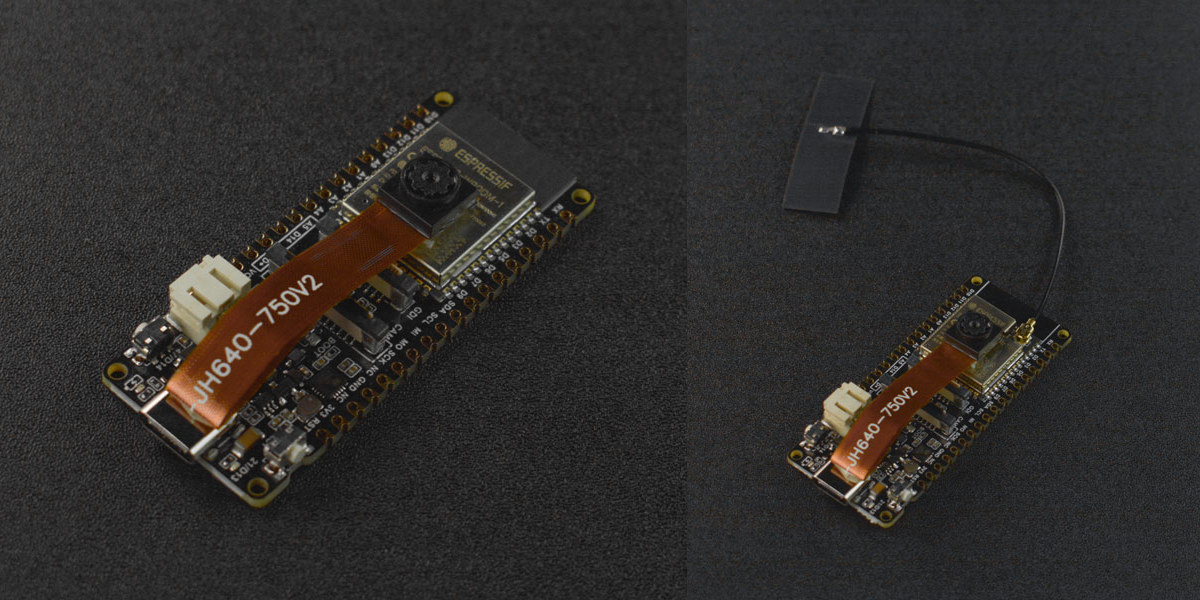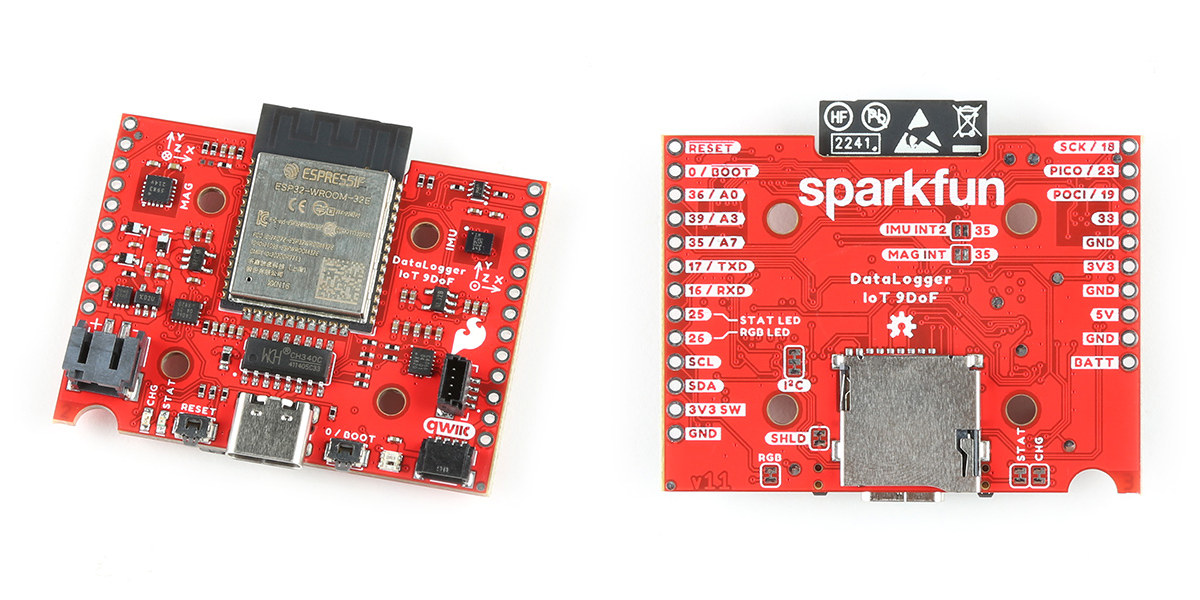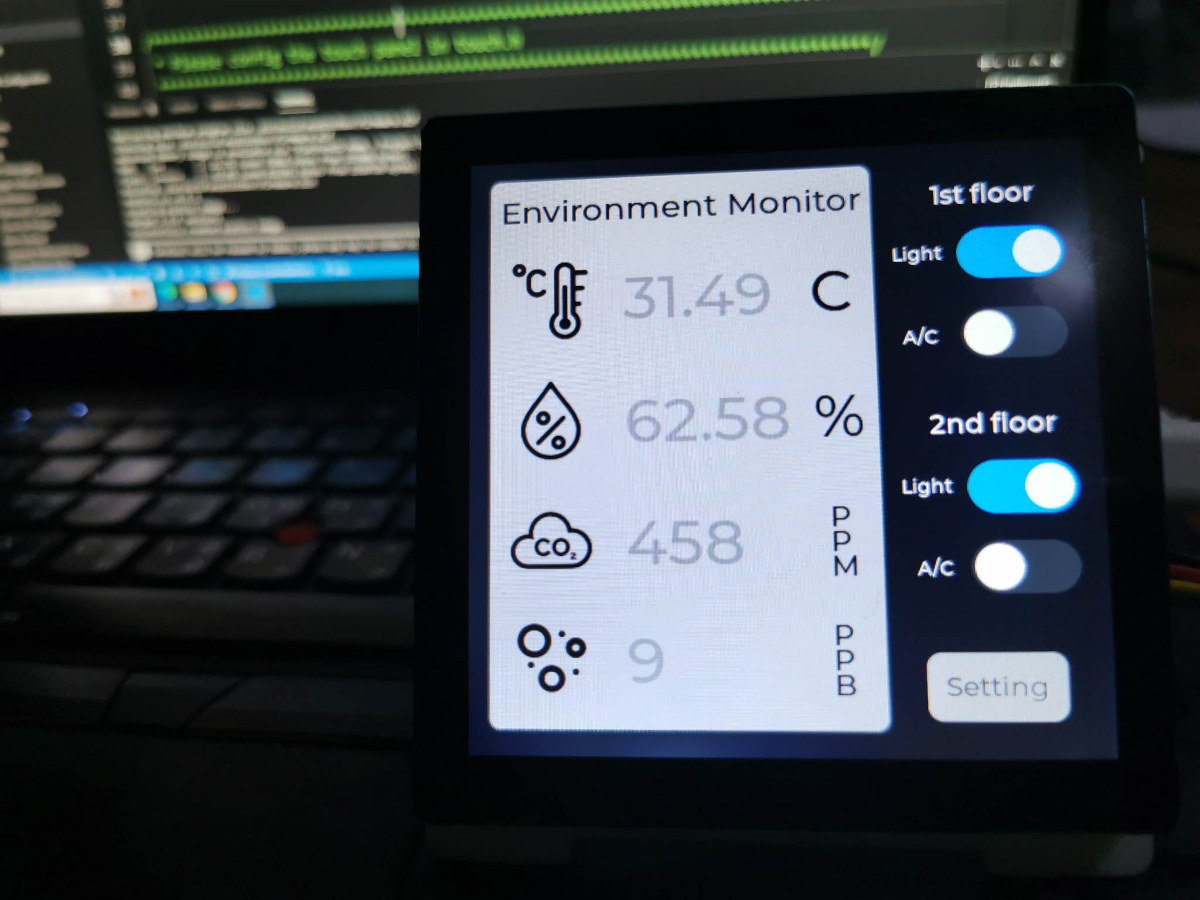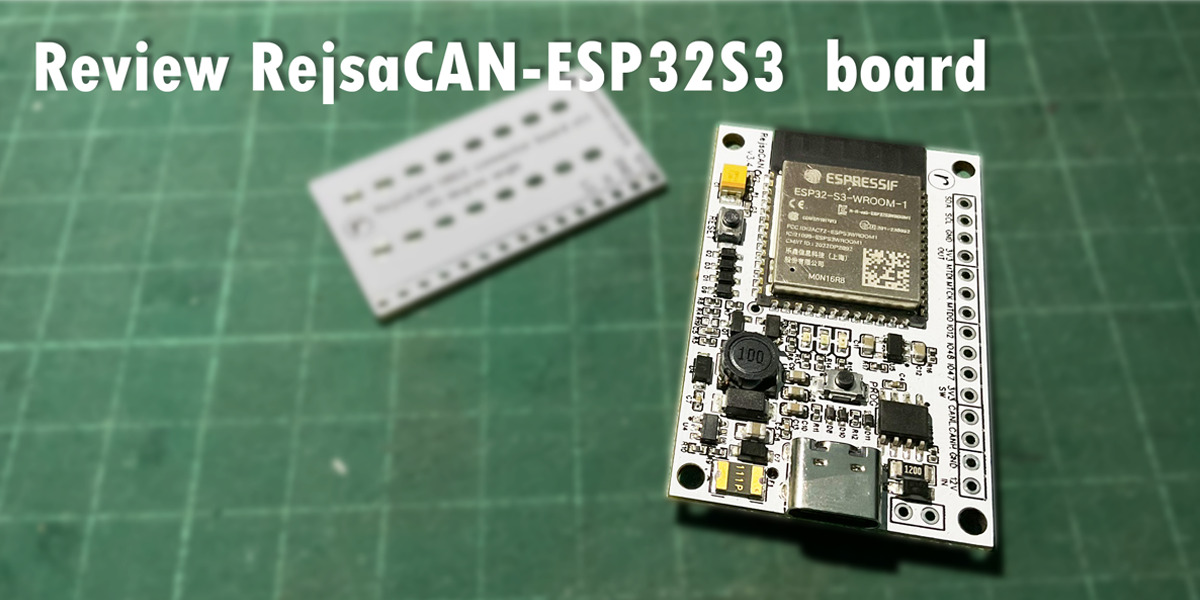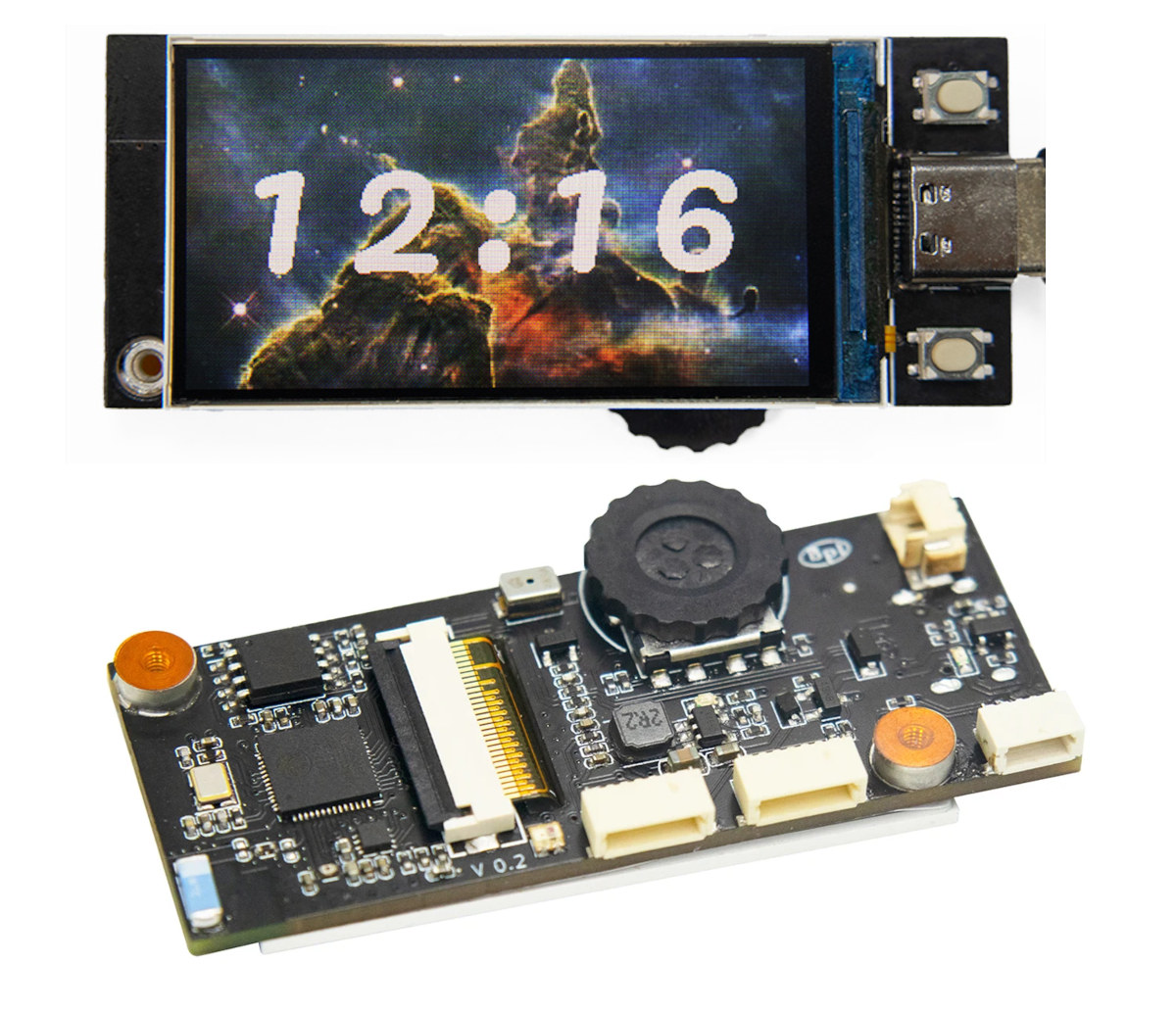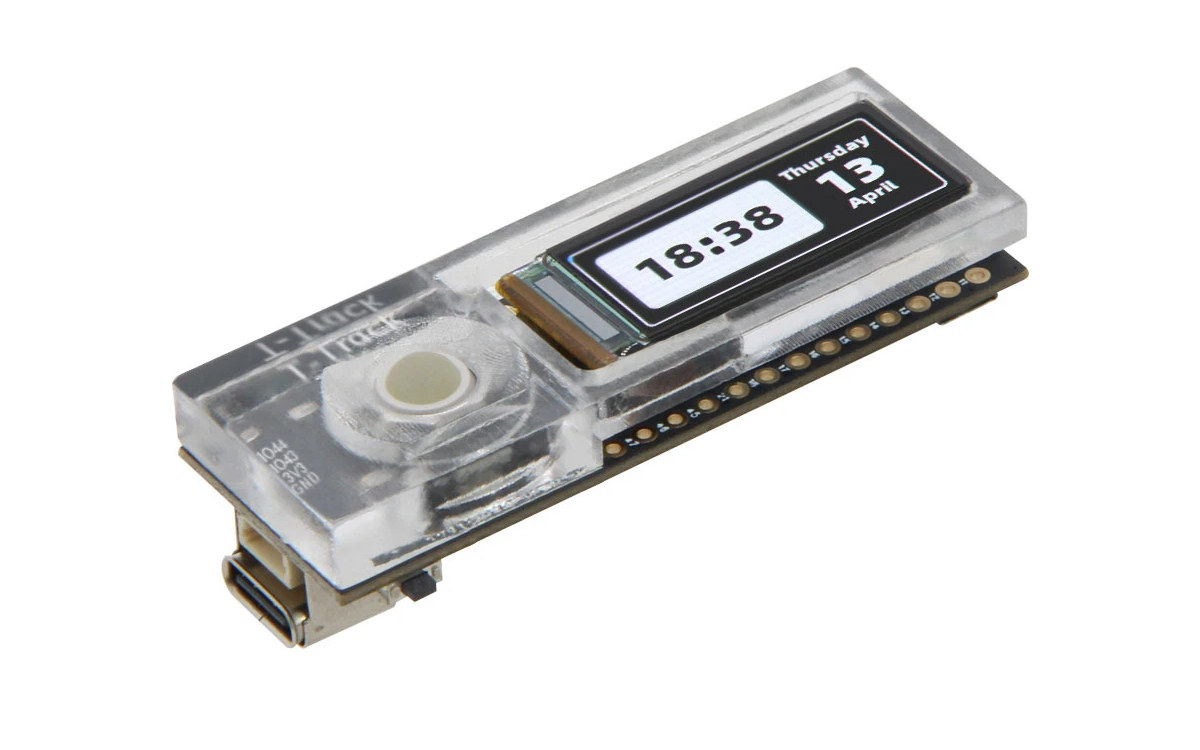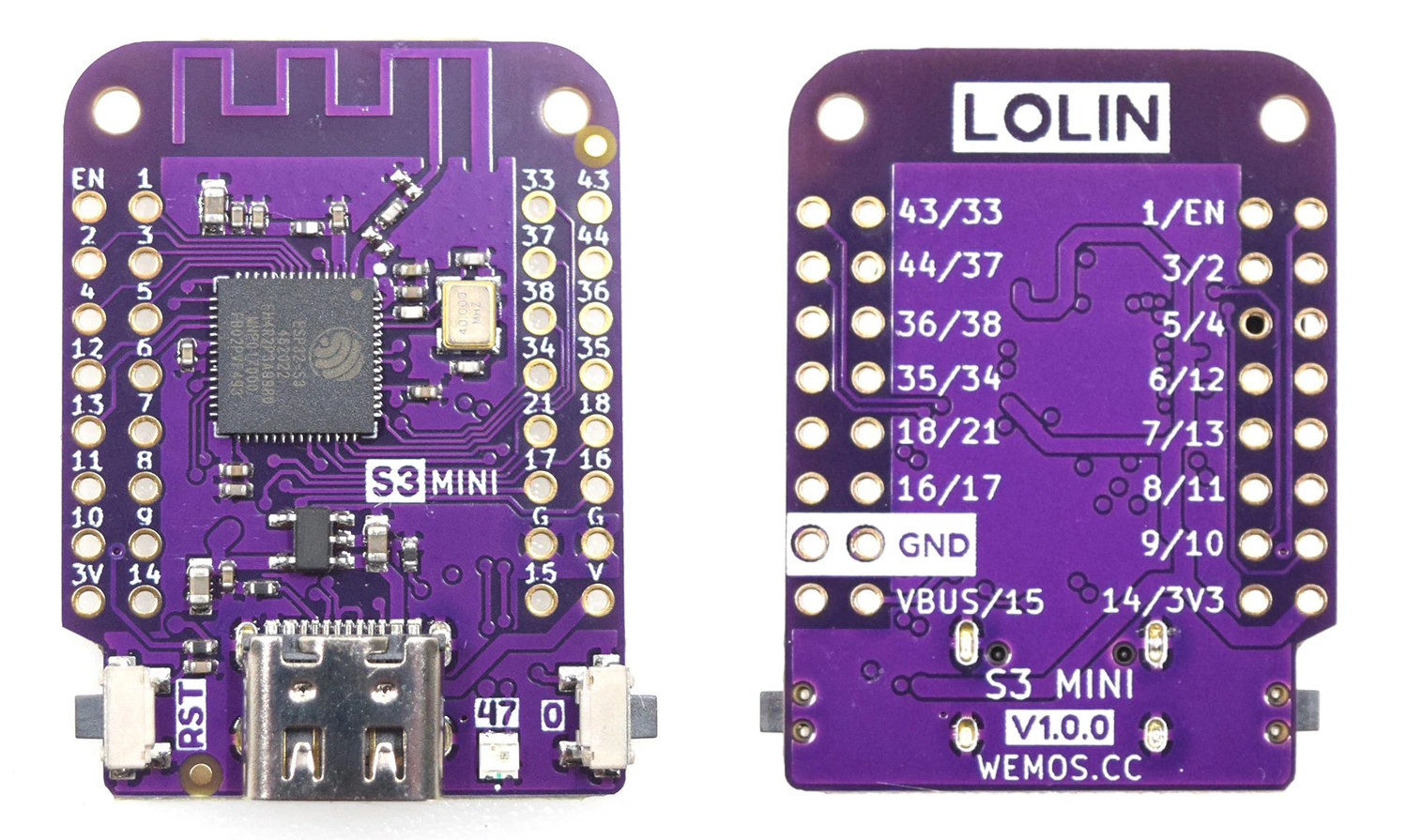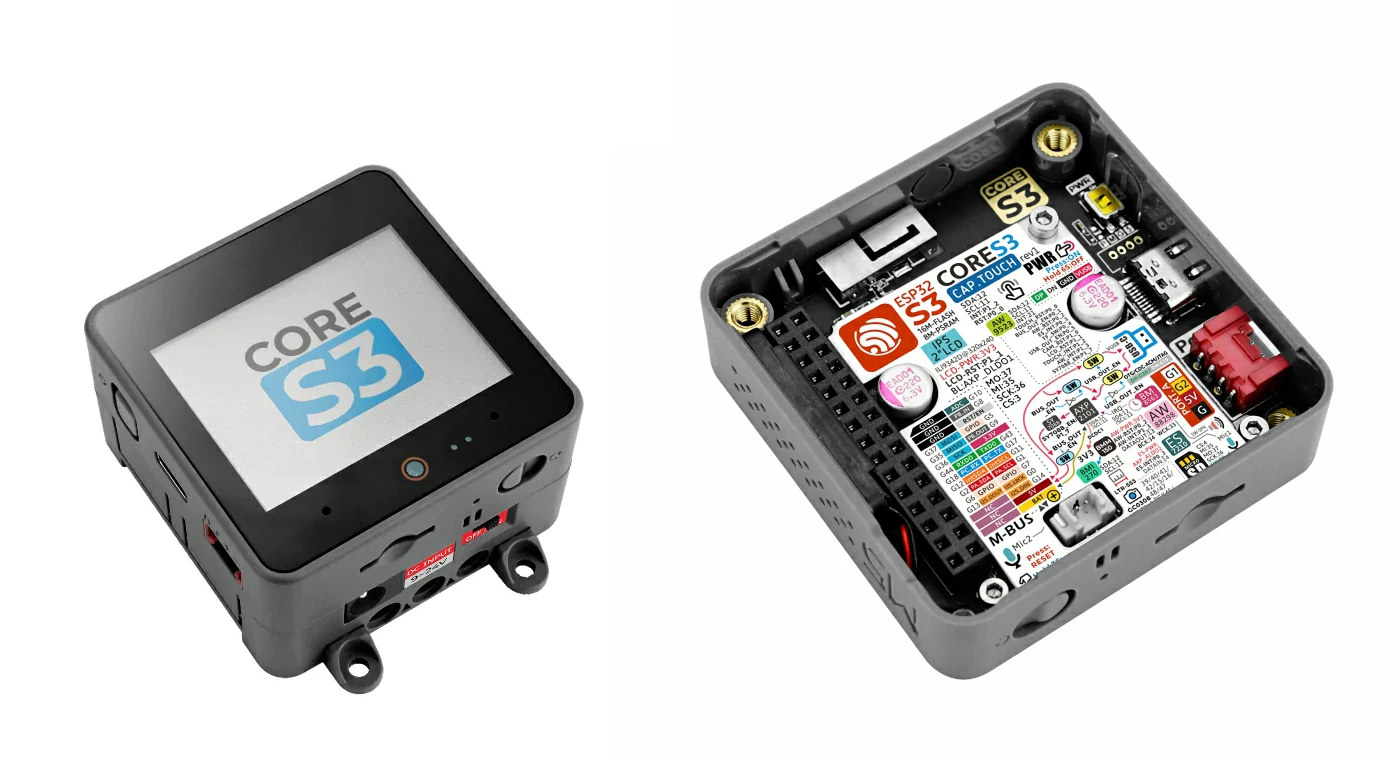DFRobot “FireBeetle 2 ESP32-S3” is a 2MP camera board with ESP32-S3N16R8 dual-core WiFi and Bluetooth microcontroller fitted with 16MB flash and 8MB PSRAM, and offered in two versions: a more compact variant with a PCB antenna, and one with an external antenna offering a better signal quality. The FireBeetle 2 ESP32-S3 also features two rows of I/Os with GPIO, I2C, SPI, ADC, USB 2.0, etc…, a USB-C port for power and programming, a few buttons, and support for a LiPo battery through a 2-pin JST connector and a charging circuit. FireBeetle 2 ESP32-S3 specifications: ESP32-S3-WROOM-1 wireless module SoC – ESP32-S3FN16R8 dual-core Tensilica LX7 microcontroller @ 240 MHz with 2.4 GHz 802.11n WiFI 4 and Bluetooth 5.0 LE connectivity Memory – 8MB PSRAM Storage – 16MB SPI flash Camera – Camera connector fitted with 2MP OV2640 camera with 68° FoV, up to 1600×1200 resolution Display – GDI connector for optional 1.54-inch, […]
SparkFun “Datalogger IoT – 9DoF” no code platform supports over 50 Qwiic sensor modules
SparkFun “DataLogger IoT – 9DOF” is an ESP32-based data logger board that transfers data to a microSD card or wirelessly to the cloud and comes with firmware that can automatically detect over 50 Qwiic modules without any programming required from the user making it a so-called “no code platform“. The board comes with a 9-axis IMU sensor + magnetometer, and two Qwiic connectors, and the data is stored in CSV or JSON formats on a microSD card or sent to IoT cloud platforms such as Amazon AWS IoT, Microsoft Azure, or Mathworks ThingSpeak using protocols like MQTT or HTTP. SparkFun “Datalogger IoT – 9DoF” specifications: Wireless module – ESP32-WROOM-32E: ESP32 dual-core microcontroller 4MB flash 2.4 GHz WiFi and Bluetooth LE connectivity, built-in PCB antenna Storage – MicroSD card slot Sensors 6-axis IMU accelerometer & gyro (ISM330DHCX) Magnetometer (MMC5983MA) 2x Qwicc I2C connectors for additional sensors USB – 1x USB Type-C […]
Review of MaTouch_ESP32-S3 4-inch Display Demo Kit with sensors, Arduino, LVGL graphics library
Makerfabs MaTouch_ESP32-S3 4-inch Display Demo Kit is an ESP32-S3 development board with a 4-inch touchscreen display, a TVOC sensor, and a thermal camera. It can be used to make various projects such as electronic photo frames. air quality monitors, or patient screening devices MaTouch_ESP32-S3 4-inch display demo kit unboxing When we unpack the box, we will find the device as in the picture, consisting of the following items: The mainboard of the MaTouch_ ESP32-S3 4-inch Display with the following specifications: Controller – ESP32-S3-WROOM-1, PCB Antenna, 16MB Flash, 8MB PSRAM, ESP32-S3-WROOM-1-N16R8 Wireless – WiFi & Bluetooth 5.0 Storage – MicroSD card slot LCD 4.0-inch IPS display with 480×480 resolution, 50+ FPS RGB 5/6/5+ SPI interface using ST7701S controller. 5 Points Touch, Capacitive via GT911 touch panel driver. Audio – MAX98357A USB – Dual USB Type-C (one for USB-to-UART and one for native USB); USB to UART Chip: CP2104 Expansion – 2x […]
Programming RejsaCAN-ESP32-S3 CAN bus board with Arduino for car “hacking”
The RejsaCAN-ESP32-S3 is an ESP32-S3 board suitable for developers who want to build a car-related project. It can control or read the data from the OBD-II connector in your car using 2.4 GHz Wi-Fi or/and Bluetooth 5 (LE), or for IoT projects, connecting a sensor to the board and sending data to an app, the cloud, or log the data to a microSD Card. The board is designed to be small enough to be installed in a car. The board is an evolution of the previous ESP32-based RejsaCAN-ESP32 with the developer – Magnus Thomé – switching to the ESP32-S3 chip as previously announced. The main specifications are similar, but the ESP32-S3 is a newer LX7 processor with Bluetooth LE 5.0 support, and the ESP32 board had to use a USB-to-serial chip to communicate or upload the program through a PC, but the new board uses the USB interface on […]
Banana Pi BPI-Centi-S3 – An ESP32-S3 board with an 1.9-inch TFT display and a rotary encoder
Banana Pi BPI-Centi-S3 is an ESP32-S3 WiFi & BLE IoT board with a 1.9-inch color TFT display, a rotary encoder, and a few I/Os, which offers an alternative to the T-Track ESP32-S3 board with AMOLED and trackball we covered a few days ago. The Banana Pi board also comes with a 2MB on-chip PSRAM, an 8MB SPI flash, a USB Type-C port for power and debugging, two buttons, a buzzer, and an RGB LED. Besides powering the board with its USB-C port, you can also connect a LiPo battery with charging support. Banana Pi BPI-Centi-S3 specifications: SoC – Espressif Systems ESP32-S3 dual-core Tensilica LX7 @ up to 240 MHz with vector instructions for AI acceleration, 512KB RAM, 2MB PSRAM, wireless connectivity Storage – 8MB SPI flash Connectivity via ESP32-S3 2.4 GHz 802.11 b/g/n Wi-Fi 4 with 40 MHz bandwidth support up to 150 Mbps Bluetooth Low Energy (BLE) 5.0 connectivity […]
LILYGO T-Track ESP32-S3 board combines 1.1-inch AMOLED display with trackball
After the T-Display-S3 AMOLED board, LILYGO has launched another ESP32-S3 board with an AMOLED display named the T-Track that features a smaller 1.1-inch AMOLED display and a trackball that allows the user to navigate any menu or user interface shown on the display. The rest of the board’s specifications are very similar with an ESP32-S3R8 dual-core chip with 8MB PSRAM providing WiFi and BLE connectivity, a 16MB SPI flash for storage, two rows of pins for up to 18x GPIOs, a Qwicc connector for module expansion, and support for USB-C charging and a LiPo battery for power. T-Track specifications: Wireless MCU – Espressif Systems ESP32-S3R8 dual-core Tensilica LX7 @ up to 240 MHz with vector instructions for AI acceleration, 512KB RAM, 8MB PSRAM, wireless connectivity Storage – 16MB flash Connectivity via ESP32-S3 2.4 GHz 802.11 b/g/n Wi-Fi 4 with 40 MHz bandwidth support Bluetooth Low Energy (BLE) 5.0 connectivity with […]
Lolin S3 Mini – Tiny $5 ESP32-S3 board follows Wemos D1 Mini form factor
LOLIN S3 Mini is a tiny ESP32-S3 WiFi and Bluetooth IoT development board that follows the Wemos D1 Mini form factor and supports its equally tiny stackable shields to add relays, displays, sensors, and so on. Wemos/LOLIN introduced their first ESP32-S3 board last year with the LOLIN S3 board with plenty of I/Os and an affordable $7 price tag. But I prefer the company’s Mini form factor because of its size and the ability to select add-on boards to easily add a range of features to your projects. So I’m pleased to find out the company has now launched the LOLIN S3 Mini following the ESP32-C3 powered LOLIN C3 Mini board unveiled in March 2022. LOLIN S3 Mini specifications: WiSoC – Espressif Systems ESP32-S3FH4R2 CPU – dual-core Tensilica LX7 @ up to 240 MHz with vector instructions for AI acceleration Memory – 512KB RAM, 2MB PSRAM Storage – 4MB QSPI […]
$60 M5Stack CoreS3 ESP32-S3 IoT controller comes with 2-inch display, VGA camera, multiple sensors
M5Stack CoreS3 is a battery-powered ESP32-S3 IoT controller with WiFi and Bluetooth connectivity, a 2-inch touchscreen display, a 0.3MP camera, a microSD card slot for storage, several sensors, plenty of I/Os, a USB Type-C OTG port, as well as a 9V to 24V DC input port. That’s the second ESP32-S3 IoT controller from M5Stack we’ve seen this year, as the CoreS3 follows the smaller M5Stack AtomS3 with a 0.85-inch display, only a few I/Os, and fewer features overall although it does come with an IR transmitter that’s missing from the larger CoreS3. M5Stack CoreS3 specifications: Wireless MCU – Espressif Systems ESP32-S3FN16R8 dual-core 32-bit Xtensa LX7 microcontroller with AI vector instructions up to 240MHz, RISC-V ULP co-processor, 512KB SRAM, 2.4GHz WiFi 4 (802.11b/g/n), Bluetooth 5.0 BLE + Mesh, 16MB flash, 8MB PSRAM Antenna – Internal “3D” antenna Storage – MicroSD card slot Display – 2-inch display with 320×240 resolution via ILI9342C […]


